Description/achievement of initiative
To create a friendly sustainable Eco system with sound health mind citizens that are innovative and creative thinkers with a vast range of opportunities living outside the poverty brackets in planned democratic society.
Implementation methodologies
There are strategies that are designed by the CEO together with his team on how to tackle the climate change, resilience and adaptation, design of livelihood projects like the energy saving stove mechanisms, making briquettes, bio-gas system among others. Through a collective effort of combining resources and mobilizing for partners who successfully help in implementation of the initiative, liaising/partnering with other organizations for a particular need is always a strategy ascertained. Monitoring and evaluation is done with time frame to clearly confirm the progress of work on ground. Each level of development is recorded for further research and record keeping for references to the experience.
Arrangements for Capacity-Building and Technology Transfer
The Chief Executive Officer revises the mechanism of how the staff in the fast place are well equipped with information about the projects in the initiative by staff mentoring with outsourced well versed experts in particular areas of profession. There is a technical support facility formed after being trained by the organization staff. This TSF is comprised of the ground local leaders, Youth Leaders, Women leaders and Religious leaders. This group of people (Technical Support Facility) are basically to help the entire community at grass root access information in addition what the staff may manage to disseminate to the communities. Technology is tackled by the Information and Technology officer with the out sourced experts in the field but more so, the use of gardgets like smart phones, cameras, projector and lap tops are used to help in easing work on ground.
Coordination mechanisms/governance structure
This initiative has levels of leadership and responsibilities as can be seen here; The top most leadership is the Steering board committee which is responsible for standing with the all weight of the organization's initiative and it comprises of three members who are at the same time Founder members of the organization(Municipal Alliance for Better and Smart Cities). This top committee approved the Chief Executive Officer (CEO) who is the leader of the Technical businesses of the organization including this initiative, Under the CEO are the Finance and administration Officer, Operations Manager, Business Development Manager, and Information Technology Officer. Below these officer are Public relations Officer, Project Officers, Data Clerk. Below these are are the Field Officers, Data Collectors and officer attendants. That team make the entire structure complete for the initiative and this makes the work move smoothly.
Partner(s)
Municipal Alliance for Better and Smart Cities, Mukono Municipal Council, Youth Empowerment Initiatives Uganda, Youth Go Green Uganda, Climate Action network Uganda, Ayego.com, Ultrahealth company, Libert ICD Uganda, Afriswe Strong Knot ltd, Life Rejuvenation Africa, Mothers in the world, Youth Advocacy Foundation for Uganda, Goshen for health and nutrition, National Forestry Authority Uganda, National Environmental Management Authority Uganda
Progress reports
Goal 1
1.2 - By 2030, reduce at least by half the proportion of men, women and children of all ages living in poverty in all its dimensions according to national definitions
1.3 - Implement nationally appropriate social protection systems and measures for all, including floors, and by 2030 achieve substantial coverage of the poor and the vulnerable
1.4 - By 2030, ensure that all men and women, in particular the poor and the vulnerable, have equal rights to economic resources, as well as access to basic services, ownership and control over land and other forms of property, inheritance, natural resources, appropriate new technology and financial services, including microfinance
1.5 - By 2030, build the resilience of the poor and those in vulnerable situations and reduce their exposure and vulnerability to climate-related extreme events and other economic, social and environmental shocks and disasters
1.b - Create sound policy frameworks at the national, regional and international levels, based on pro-poor and gender-sensitive development strategies, to support accelerated investment in poverty eradication actions
Goal 2
2.1 - By 2030, end hunger and ensure access by all people, in particular the poor and people in vulnerable situations, including infants, to safe, nutritious and sufficient food all year round
2.3 - By 2030, double the agricultural productivity and incomes of small-scale food producers, in particular women, indigenous peoples, family farmers, pastoralists and fishers, including through secure and equal access to land, other productive resources and inputs, knowledge, financial services, markets and opportunities for value addition and non-farm employment
2.4 - By 2030, ensure sustainable food production systems and implement resilient agricultural practices that increase productivity and production, that help maintain ecosystems, that strengthen capacity for adaptation to climate change, extreme weather, drought, flooding and other disasters and that progressively improve land and soil quality
2.a - Increase investment, including through enhanced international cooperation, in rural infrastructure, agricultural research and extension services, technology development and plant and livestock gene banks in order to enhance agricultural productive capacity in developing countries, in particular least developed countries
2.c - Adopt measures to ensure the proper functioning of food commodity markets and their derivatives and facilitate timely access to market information, including on food reserves, in order to help limit extreme food price volatility
Goal 4
4.1 - By 2030, ensure that all girls and boys complete free, equitable and quality primary and secondary education leading to relevant and effective learning outcomes
4.2 - By 2030, ensure that all girls and boys have access to quality early childhood development, care and pre-primary education so that they are ready for primary education
4.4 - By 2030, substantially increase the number of youth and adults who have relevant skills, including technical and vocational skills, for employment, decent jobs and entrepreneurship
4.5 - By 2030, eliminate gender disparities in education and ensure equal access to all levels of education and vocational training for the vulnerable, including persons with disabilities, indigenous peoples and children in vulnerable situations
4.6 - By 2030, ensure that all youth and a substantial proportion of adults, both men and women, achieve literacy and numeracy
4.7 - By 2030, ensure that all learners acquire the knowledge and skills needed to promote sustainable development, including, among others, through education for sustainable development and sustainable lifestyles, human rights, gender equality, promotion of a culture of peace and non-violence, global citizenship and appreciation of cultural diversity and of culture’s contribution to sustainable development
4.a - Build and upgrade education facilities that are child, disability and gender sensitive and provide safe, non-violent, inclusive and effective learning environments for all
Goal 5
5.1 - End all forms of discrimination against all women and girls everywhere
5.2 - Eliminate all forms of violence against all women and girls in the public and private spheres, including trafficking and sexual and other types of exploitation
5.3 - Eliminate all harmful practices, such as child, early and forced marriage and female genital mutilation
5.5 - Ensure women’s full and effective participation and equal opportunities for leadership at all levels of decision-making in political, economic and public life
5.6 - Ensure universal access to sexual and reproductive health and reproductive rights as agreed in accordance with the Programme of Action of the International Conference on Population and Development and the Beijing Platform for Action and the outcome documents of their review conferences
5.a - Undertake reforms to give women equal rights to economic resources, as well as access to ownership and control over land and other forms of property, financial services, inheritance and natural resources, in accordance with national laws
5.b - Enhance the use of enabling technology, in particular information and communications technology, to promote the empowerment of women
5.c - Adopt and strengthen sound policies and enforceable legislation for the promotion of gender equality and the empowerment of all women and girls at all levels
Goal 13
13.1 - Strengthen resilience and adaptive capacity to climate-related hazards and natural disasters in all countries
13.2 - Integrate climate change measures into national policies, strategies and planning
13.3 - Improve education, awareness-raising and human and institutional capacity on climate change mitigation, adaptation, impact reduction and early warning
13.b - Promote mechanisms for raising capacity for effective climate change-related planning and management in least developed countries and small island developing States, including focusing on women, youth and local and marginalized communities
* Acknowledging that the United Nations Framework Convention on Climate Change is the primary international,
intergovernmental forum for negotiating the global response to climate change.
Goal 15
15.1 - By 2020, ensure the conservation, restoration and sustainable use of terrestrial and inland freshwater ecosystems and their services, in particular forests, wetlands, mountains and drylands, in line with obligations under international agreements
15.2 - By 2020, promote the implementation of sustainable management of all types of forests, halt deforestation, restore degraded forests and substantially increase afforestation and reforestation globally
15.3 - By 2030, combat desertification, restore degraded land and soil, including land affected by desertification, drought and floods, and strive to achieve a land degradation-neutral world
15.4 - By 2030, ensure the conservation of mountain ecosystems, including their biodiversity, in order to enhance their capacity to provide benefits that are essential for sustainable development
15.5 - Take urgent and significant action to reduce the degradation of natural habitats, halt the loss of biodiversity and, by 2020, protect and prevent the extinction of threatened species
15.7 - Take urgent action to end poaching and trafficking of protected species of flora and fauna and address both demand and supply of illegal wildlife products
15.8 - By 2020, introduce measures to prevent the introduction and significantly reduce the impact of invasive alien species on land and water ecosystems and control or eradicate the priority species
15.9 - By 2020, integrate ecosystem and biodiversity values into national and local planning, development processes, poverty reduction strategies and accounts
15.a - Mobilize and significantly increase financial resources from all sources to conserve and sustainably use biodiversity and ecosystems
15.c - Enhance global support for efforts to combat poaching and trafficking of protected species, including by increasing the capacity of local communities to pursue sustainable livelihood opportunities
Goal 17
Finance -
17.1 - Strengthen domestic resource mobilization, including through international support to developing countries, to improve domestic capacity for tax and other revenue collection
17.3 - Mobilize additional financial resources for developing countries from multiple sources
Technology -
Capacity-Building -
17.9 - Enhance international support for implementing effective and targeted capacity-building in developing countries to support national plans to implement all the sustainable development goals, including through North-South, South-South and triangular cooperation
Trade -
17.10 - Promote a universal, rules-based, open, non-discriminatory and equitable multilateral trading system under the World Trade Organization, including through the conclusion of negotiations under its Doha Development Agenda
17.11 - Significantly increase the exports of developing countries, in particular with a view to doubling the least developed countries’ share of global exports by 2020
Systemic Issues - Policy and Institutional coherence
17.13 - Enhance global macroeconomic stability, including through policy coordination and policy coherence
17.14 - Enhance policy coherence for sustainable development
17.15 - Respect each country’s policy space and leadership to establish and implement policies for poverty eradication and sustainable development
Multi-stakeholder partnerships
17.16 - Enhance the global partnership for sustainable development, complemented by multi-stakeholder partnerships that mobilize and share knowledge, expertise, technology and financial resources, to support the achievement of the sustainable development goals in all countries, in particular developing countries
17.17 - Encourage and promote effective public, public-private and civil society partnerships, building on the experience and resourcing strategies of partnerships
Data, monitoring and accountability
17.18 - By 2020, enhance capacity-building support to developing countries, including for least developed countries and small island developing States, to increase significantly the availability of high-quality, timely and reliable data disaggregated by income, gender, age, race, ethnicity, migratory status, disability, geographic location and other characteristics relevant in national contexts
17.19 - By 2030, build on existing initiatives to develop measurements of progress on sustainable development that complement gross domestic product, and support statistical capacity-building in developing countries


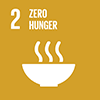
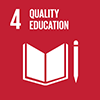

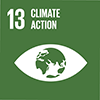
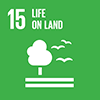
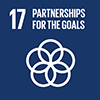
 Aug/.2024
Aug/.2024
 Feb/2025
Feb/2025
 Jan/2025
Jan/2025
 March/2025
March/2025
 Time-frame: March/2020 - Feb/2025
Time-frame: March/2020 - Feb/2025